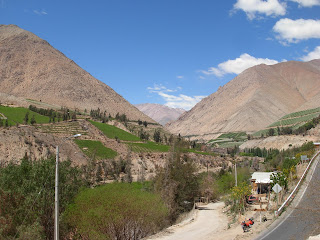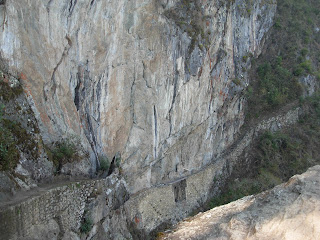On Monday (September 29th), my friend Victoria told me about a Geography Conference that she was going to in Concepción and invited me to come along. Encuentro Nacional de Esudiantes de Geografía or ENEG is a conference of several different universities in Chile where students meet to talk about environmental and geographic issues in Chile at the Universidad de Concepción…I figured it would be interesting so I jumped on board. After our EAP class on Tuesday night, we rushed back to our houses, got our bags and met at her facultad of Geography, Architecture and Urbanism to catch the bus to Concepción at 11:00pm. Waiting for the buses was a group of about seventy Universidad de Chile students, drinking their beers, wine, piscolas and basically having a big party in the parking lot. Leaving Santiago on the buses was the first indication that this geography conference was in fact an excuse for a three day party vacation. We met up with another EAP student to make for a grand total of three gringos on the Chilean ENEG trip. We arrived in Concepión in the morning after a six hour bus ride from Santiago and went to our first and last geography curso or seminario of the day. The seminar we went to discussed the implementation of solar panels in the Atacama desert as a source of renewable energy. In the afternoon, we went to took a bus about forty minutes to visit a Peruvian warship that was captured near the coast of Chile during the War of the Pacific (Chile vs. Peru and Bolivia) and now functions as a naval museum.
Unlike the Universidad de Chile, the Universidad de Concepción is organized more like the universities in the United States with a central campus containing all the different schools (school of medicine, humanities, engineering, etc.). At the Universidad de Chile, the various facultads are spread throughout the city so you could have one class at the facultad of humanities and for your next class, you might have take a forty minute metro ride to get to the school of government. Most Chileans students have all their classes at one facultad but for foreign exchange students, we often have classes in different places and are always rushing via the Santiago metro to get to class.

The Universidad de Concepción is surrounded by the forest and is a very visually aesthetic campus.

After visiting the warship, we took the buses back to the place where would spend the night. Aptly nicknamed the "shithole" by Victoria, our gymnasium hostel was filled with one hundred plus students from the Universidad de Chile and La Católica. It was quite a sight to see this volume of people sleeping in a gymnasium. Some students were super prepared and set up tents but Victoria, Reese and I just put our sleeping bags on the gym floor along with the majority of the other students. Although I have never spent the night in a homeless shelter, I would imagine that it would be something similar to my two nights in this gymnasium. We did not end up sleeping until about 2:30am because the students turned the empty parking lot in the back into a major party complete with a bonfire, guitar playing and campfire songs although unfortunately there was no "She'll be coming round the mountain" or "Red River Valley".
Thursday morning, the wake up call was at 7:00am and we were on the bus by 8:30...very little sleep was actually obtained during this trip to Concepción. Like the day before, we went to one seminar, ate lunch at the cafeteria and took the bus to Lota with a group of La Chile students. Located about an hour away from Concepción, Lota used to be a major mining town but now it serves as a tourist attraction with guided tours of the carbon mine, the Chiflón del diablo.
At the Chiflón del diablo( in English, the Devil's Blast), we put on our mining equipment and were ready to go on the tour. In the elevator, we were lowered 16 stories o pisos below ground level and when we turned all the lights off, very, very black...too dark. Our guide told us that boys as young as eight years old used to work in the mines and when a boy was around the age of thirteen, they were considered full fledged miners.
Too dark

The three Gringos
After our trip to the mine ended, we made our way to the beach to reconnect with our Pacific Ocean roots.
However, perhaps the best part of the trip was discovering a burrito/Mexican food restaurant right near the Universidad. So dinner on Thursday and Friday night was burritos....very delicious.
Send me emails! ecwhite@ucdavis.edu
Word of the day: mina=mine, enviar=send, llamar=to call






















































